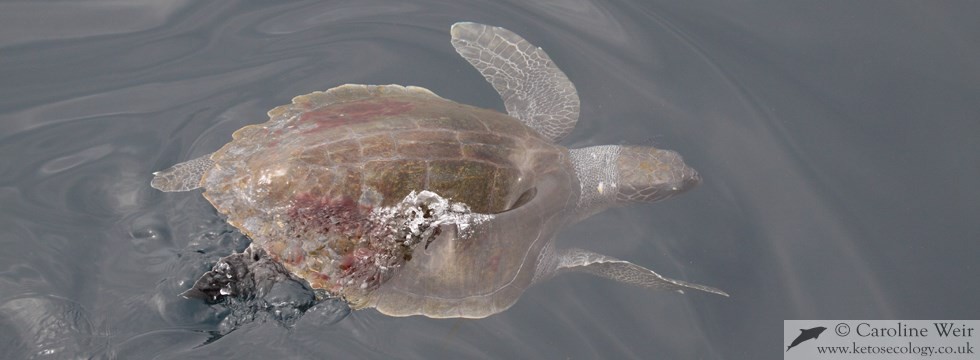Turtle guards on seismic tail buoys
Turtle guards are a structure welded to the underside of particular tail buoy designs, with the aim of avoiding sea turtles from becoming fatally entrapped in gaps at the front of the tail buoy undercarriage. Full information on the purpose, design issues and conservation relevance of turtle guards is provided in the document download on this page.
Seven species of sea turtle occur worldwide, and several of these species are regularly observed during seismic surveys in warm temperate and tropical waters. All of these species are considered to be of high conservation concern, with the current status of each species ranging from vulnerable (e.g. olive ridley turtle) to critically endangered (e.g. Kemp’s ridley, leatherback and hawksbill turtles) (IUCN red list, version 13.1, 2013).
Although the unknown impacts of airgun sound on sea turtles has received some interest from industry and conservation bodies, an additional and less-acknowledged direct impact of some seismic surveys on sea turtles is the unintended turtle mortality that occurs following entrapment in certain types of towed seismic equipment. While entanglements within the airgun array are difficult to address, the fatal entrapment of turtles in certain designs of seismic tail buoy is an avoidable cause of mortality. It should be noted that not all tail buoy designs will trap turtles; those with dual tow points and an open undercarriage have been implemented in turtle mortality, whereas tail buoy designs with a single tow point and a closed undercarriage do not appear to trap turtles (see document link below for more information).
During 2007 a document was released entitled 'Reducing the fatal entrapment of marine turtles in towed seismic survey equipment' (Ketos Ecology, 2007), which outlined the issue of accidental mortality of sea turtles occurring in some designs of seismic tail buoy. The document contained information on the possible mechanisms of turtle entrapment in tail buoys and made recommendations for minimising the problem via the use of 'turtle guards' that could be fitted to the front of the tail buoy undercarriage to prevent turtles from becoming trapped. During October 2007, this document was distributed to the IAGC, the OGP and various seismic regulatory authorities worldwide with the aim of raising awareness and encouraging the seismic industry to develop a solution to the problem.
During 2008/09, it became apparent that some designs of turtle guard being implemented by particular seismic contractors were not successful in eliminating turtle mortality in tail buoys. Consequently, an industry-wide review of this issue is required to exchange information on the success of various designs and implementation of turtle guards and to ensure that a ‘best practice’ is subsequently developed to effectively reduce turtle mortality and minimise environmental impact. An updated document was released in 2009 containing information on the problem, mechanisms and possible solutions to this issue. This document can be downloaded at the link above.

Loggerhead turtle off Angola.

Example of a an exclusion-deflector type turtle guard fitted to a seismic tail buoy (the guard is circled in red).
All content and images are copyright Caroline R. Weir (2025)


